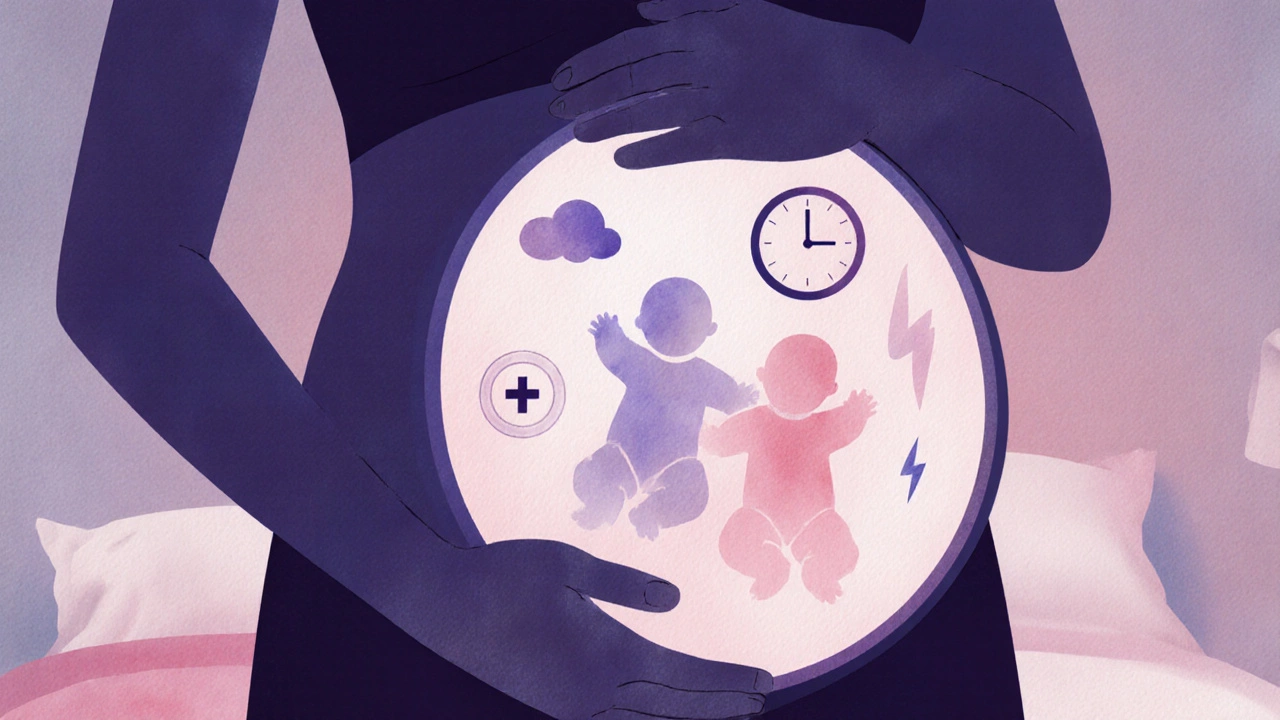IVF Twin Probability Calculator
Your Twin Probability
Dreaming of holding two newborns at once? Many couples wonder if they can steer IVF toward a twin pregnancy. The short answer: you can tilt the odds, but you can’t guarantee twins. Let’s break down how IVF works, what controls the number of embryos, and why picking twins is more about probability than a precise choice.
What is IVF?
IVF is a reproductive technology where eggs are fertilized by sperm outside the body, then the resulting embryo(s) are placed back into the uterus. It started in the late 1970s and now helps millions of families worldwide. The process involves ovarian stimulation, egg retrieval, fertilization in the lab, and finally embryo transfer. While the science is sophisticated, the goal is simple: create a healthy embryo that can develop into a baby.
How often does IVF result in twins?
In the United States, twin births from IVF hover around 20% when multiple embryos are transferred, compared with about 3% in natural conception. In India, recent clinic data (2023‑2024) show a twin rate of roughly 15% for double embryo transfers. The exact number depends on how many embryos are placed, the quality of those embryos, and the mother’s age.
Tools That Influence the Number of Embryos
- Multiple Embryo Transfer (MET): Transferring two or more embryos in a single cycle. This is the most direct way to raise twin odds.
- Single Embryo Transfer (SET) and Elective Single Embryo Transfer (eSET): One embryo is placed, dramatically lowering twin risk (under 2%).
- Embryo Splitting: A lab technique where a single early‑stage embryo is divided to create two genetically identical embryos, similar to natural identical twins.
- Preimplantation Genetic Testing (PGT): Screens embryos for chromosomal health, allowing clinics to select the strongest ones for transfer, indirectly affecting twin chances by influencing which embryos survive.

Comparing Transfer Strategies
| Method | Typical Number of Embryos Transferred | Live‑birth Rate per Cycle (%) | Twin Birth Rate (%) |
|---|---|---|---|
| Elective Single Embryo Transfer (eSET) | 1 | 45‑55 | 1‑2 |
| Standard Single Embryo Transfer (SET) | 1 | 38‑48 | 2‑3 |
| Double Embryo Transfer (DET) | 2 | 55‑65 | 15‑25 |
| Embryo Splitting (identical twins) | 2 (from 1) | 30‑40 | ~30 (since both embryos are placed) |
Can You *Pick* Twins? What the Science Says
Short answer: no. You can tip the scales, but you can’t point and say, “These will be twins.” Here’s why:
- Embryo survival is unpredictable. Even if you transfer two embryos, one may stop developing early, resulting in a singleton.
- Embryo quality matters. Clinics often rank embryos based on morphology and PGT results. High‑quality embryos have a better chance of implantation, raising twin odds when more than one is transferred.
- Uterine environment. The mother’s Maternal Age and uterine receptivity influence whether one or both embryos implant.
- Legal and ethical limits. Many countries, including India, have guidelines encouraging SET for women under 35 to curb high‑order multiples.
In practice, couples who want twins usually request a double embryo transfer (DET) or, in rare cases, ask for embryo splitting. Clinics will discuss the added risks and may refuse if they deem it unsafe.
Risks of Twin Pregnancy
Twins sound romantic, but they come with real health challenges.
- Maternal complications: Higher rates of pre‑eclampsia, gestational diabetes, and cesarean delivery.
- Preterm birth: About 60% of twins are born before 37 weeks, increasing NICU stays.
- Low birth weight: Twins are more likely to weigh under 2.5kg, affecting long‑term growth.
- Financial strain: Two infants mean double the pediatric visits, vaccinations, and diaper purchases.
Because of these factors, many fertility specialists counsel patients to aim for a singleton unless there’s a compelling medical reason.

When Might Twins Be Desirable?
Couples sometimes consider twins for practical reasons-saving on childcare costs or wanting siblings close in age. Even then, most clinics recommend a gradual approach: start with SET, and if a second child is still desired, try another cycle later. This reduces health risks while still achieving the goal of two children.
Practical Tips for Couples Considering Twins
- Talk openly with your reproductive endocrinologist about your family‑size goals.
- Ask about the clinic’s success and twin‑rate statistics for different transfer options.
- Consider your age and health; older women (<35) often have higher twin odds with DET, but also higher maternal risks.
- If you’re set on twins, discuss embryo splitting and the associated cost (usually 1.5‑2× a normal cycle).
- Plan for the possibility of a singleton birth-have a backup plan for a second IVF cycle or natural conception later.
Remember, the goal of IVF is a healthy baby, not just a specific number. Keeping that perspective helps you make the safest, most informed decision.
Frequently Asked Questions
Can I guarantee twins with IVF?
No. IVF can increase the probability of twins by transferring multiple embryos or using embryo splitting, but implantation is never certain.
What is the safest way to have twins?
There is no “safe” way to guarantee twins. The safest approach is to aim for a singleton and consider a second pregnancy later. If twins are pursued, a double embryo transfer at a reputable clinic with close monitoring is the standard method.
How much does embryo splitting cost in India?
Most Indian IVF centres charge roughly 1.5times the price of a standard cycle, ranging from INR2.5lakhs to4lakhs, depending on the clinic’s technology and expertise.
Will my insurance cover a double embryo transfer?
Coverage varies. Some private insurers in India cover a set number of IVF cycles but limit the number of embryos per transfer. Check your policy details and ask the clinic’s financial counselor.
Does age affect twin rates in IVF?
Yes. Women under 35 who receive a double embryo transfer have the highest twin rates (up to 25%). Older women (>38) often have lower implantation success, so twin chances drop despite multiple embryos.

 IVF Cost in the USA: Real Numbers, Hidden Fees, and Budgeting Tips
IVF Cost in the USA: Real Numbers, Hidden Fees, and Budgeting Tips
 Best Herbal Supplement Company: How to Choose Wisely
Best Herbal Supplement Company: How to Choose Wisely
 Understanding the Various Types of Heart Surgery Procedures in 2025
Understanding the Various Types of Heart Surgery Procedures in 2025
 How to Lose 20 Pounds in 3 Months: A Practical Guide
How to Lose 20 Pounds in 3 Months: A Practical Guide
 What State Is Ranked #1 in Health Care? The Top Choice for Medical Tourism in 2025
What State Is Ranked #1 in Health Care? The Top Choice for Medical Tourism in 2025